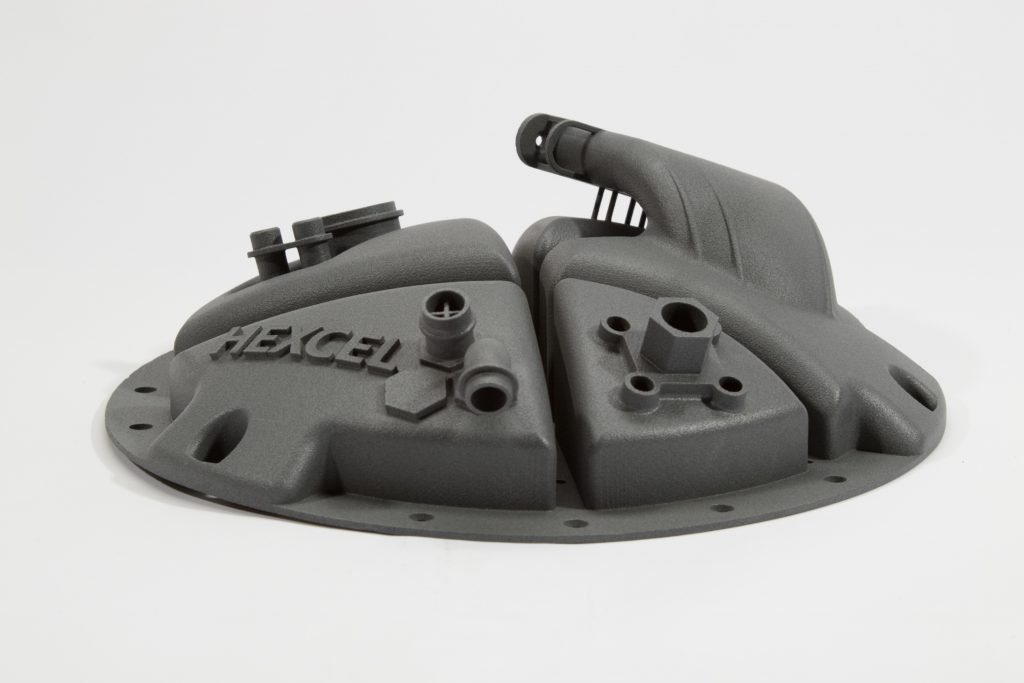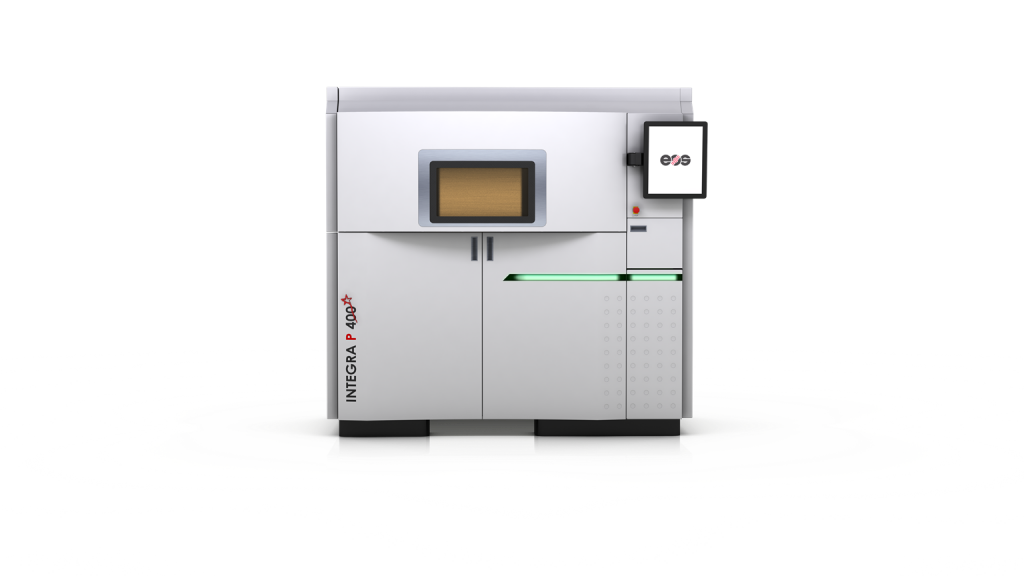PEKK is one of my favorite 3D printing materials. With very high service temperatures, high strength, and chemical resistance it is a high-performance polymer that has applications in very demanding areas such as aerospace. PEKK is much less known and used than PEEK and PEI in 3D Printing. Where the former is the high-performance material with the irresistible brand and the latter has been used to make thousands of aerospace parts for decades PEKK is little known or understood. The material is on the march however with new capacity being made available by Arkema en Gharda, while exciting medical applications being explored by Oxford Performance Materials and Kimya. Companies such as 3Dxtech also offer it as a filament for FDM. Meanwhile, Intamsys, Roboze, Stratasys, and Minifactory have added the material to their arsenal in FDM while EOS is doing so for sintering. Tantalizingly PEKK may offer performance similar to that of PEEK but some grades could be easier to process and be more versatile. One firm with big plans for PEKK is Hexcel. Hexcel is a $2 billion revenue company that makes carbon fiber materials, carbon fiber parts, other composites, and composite structures. Used in commercial and military aviation as well as space Hexcel is used to making complex structures with very demanding requirements. It acquired OPM’s aerospace business and went on to develop the material and resulting structures for 3D printing. We asked Dr. Whitney Kline, Engineering Manager at Hexcel, to tell us more.

A HexPekk cubesat frame.
Why is PEKK so exciting?
PEKK is engineering grade top-level polymer with a wide usable temperature range qualified from -300F to +300F, 600F melt high performance, great chemical compatibility, and it performs well in tests that are important for aircraft applications such as flammability tests and measurements of smoke and toxicity.
What products do you make?
Hexcel globally supplies products including carbon fiber, woven composite fabrics, prepregs and specialty aerospace products such as honeycomb core and our Acousti-Cap product family. Specifically with additive products, we offer our Selective Laser Sintered (SLS) PEKK-based materials—HexPEKK
-N which is a pure resin material and HexPEKK
-100 which uses Hexcel’s high-performance carbon fiber alongside the PEKK. We supply build-to-print, ready-to-fly parts for our customers, and all of them are manufactured in our ISO9001/AS9100 approved facility based near Hartford, CT.
Why should I work with you?
Hexcel is a global leader in advanced composites technology with an extensive portfolio and proven performance in delivering composite solutions that are stronger, lighter and tougher. Moreover, we have deep technical expertise and a history of supporting the largest aerospace and defense companies with high quality, high-performing products. Combining that expertise with the excellent properties of HexPEKK
and the extensive material characterization we have, our team provides a proven, high-performance material at aerospace-quality levels.
What advantages does PEKK have over PEEK?
PEKK has a wider processing window than PEEK, a better compressive strength, and increased wettability.
What about PEI?
We are frequently asked to replace PEI in customer applications. PEI is a great material for prototyping and development, but when you look at a production environment in aerospace applications it’s often incompatible with the chemicals and fluids that are used, including jet fuel, cleaning and defumigation solvents and oils. PEKK is also stronger and has a higher usable temperature range than PEI.

Integrating functionality into parts can reduce part count as well as weight
For what applications is it most suited?
There’s a lot of ductwork required in aero/defense applications and those are often in tight envelopes with high structural performance. We also supply brackets and a variety of part types that traditionally would be made out of cast aluminum or magnesium. Any application where there is a need for weight savings, envelope savings, and high performance is a great candidate for HexPEKK

An aerospace AEC ducting example.
What kinds of customers do you have?
Hexcel supports customers in the commercial aerospace, space and defense, and industrial markets.
What kinds of people would you like to work with?
We are interested in many types of customers not only within our current markets, but we also are continually looking for new opportunities.

What do you see as emerging applications in your field?
We are excited to see the impact additive manufacturing will have on retrofits and upgrades, which are very important parts of the defense and commercial aerospace markets. It is also exciting to support space customers as the frequency of satellite and commercial space launches increases, driving the need for quick and innovative parts.
What capabilities do you have?
With our expertise in additive manufacturing, our Hartford site offers selective laser sintered parts as a contract manufacturer. We offer end-use components, as well as coordinate secondary processes, such as machining, NDT, painting, plating, and bonding.
Why is PEKK so interesting in aerospace?
It is a chemically robust, high strength, and wide temperature ranging polymer which lets it be used in some of the most challenging applications in the industry.
What advice do you have should I be a company looking to manufacture using 3D printing?
When using 3D printing in applications that support manned applications or high-performance systems, it’s important to remember the fundamentals of good manufacturing: process, quality, repeatability and traceability.
There is a lot that goes into bringing a new material and process to market in the aerospace industry. The process for qualifying a new material for aerospace often takes more than a year and there is a large investment that goes into the process and machines. It’s important to consider whether your company needs to be in-house experts on every kind of 3D printing technology or material, or whether it is more valuable to rely on the experience of established parts and materials suppliers who know how to get quality product out the door so your company can focus on making cool end products.
The post Interview with Hexcel on PEKK for 3D Printing appeared first on 3DPrint.com | The Voice of 3D Printing / Additive Manufacturing.


